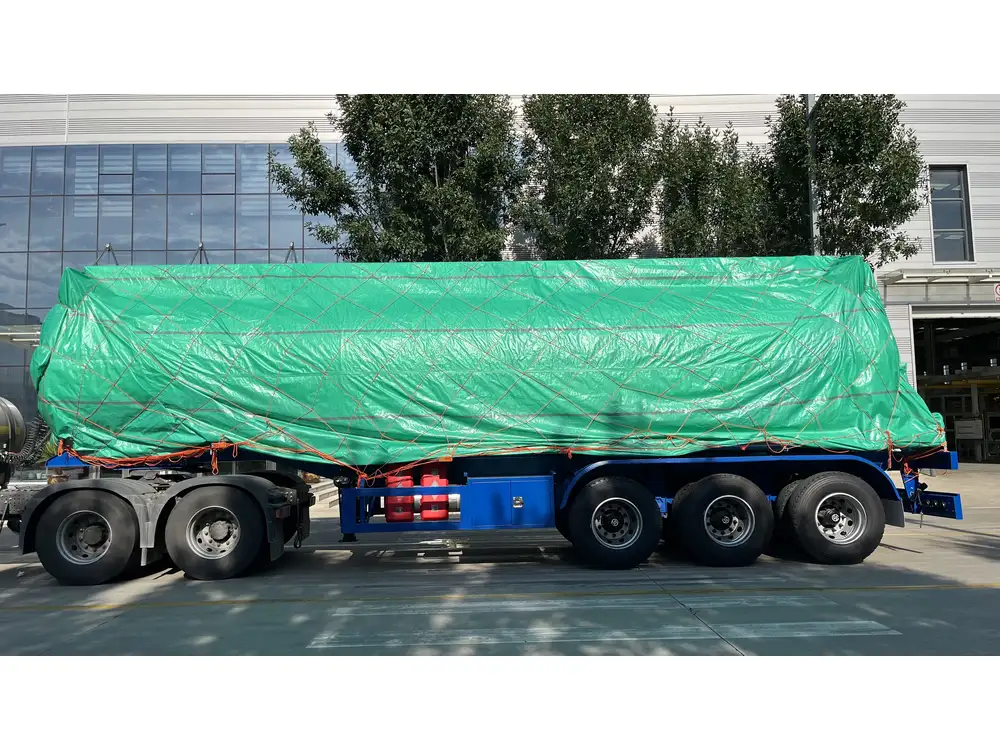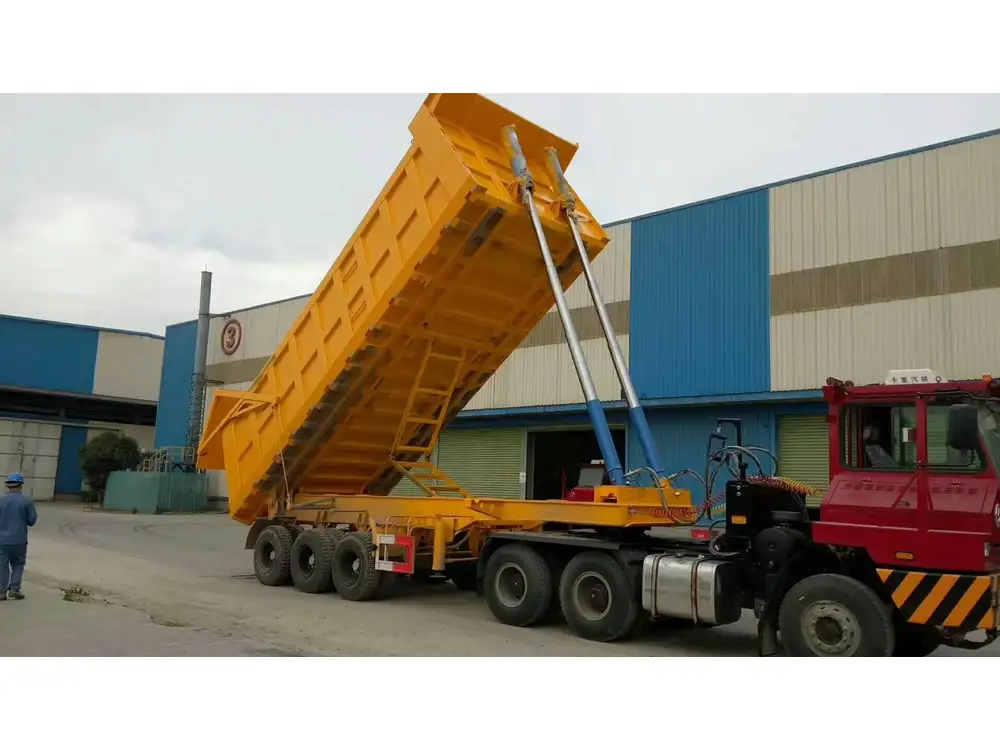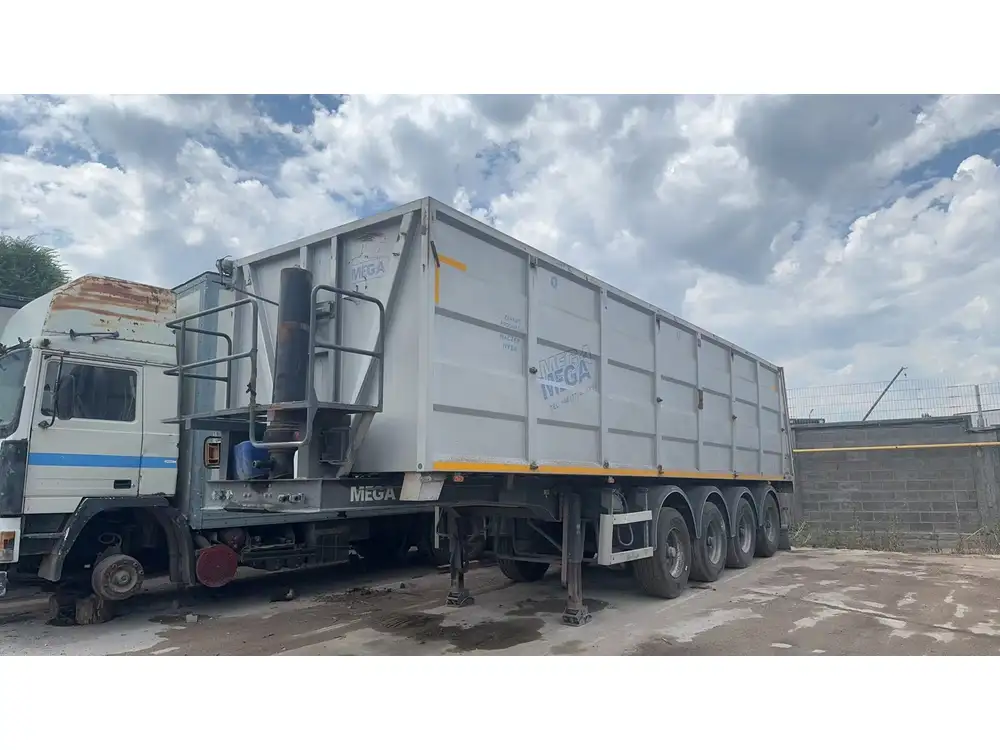Building a dump trailer without hydraulics may sound daunting, but with the right knowledge and tools, it can be a highly rewarding project. In this guide, we delve into the steps, materials, and techniques necessary for creating a functional and efficient dump trailer, addressing common issues and elevating user understanding.
Understanding the Basics of a Dump Trailer
Before embarking on the construction of your dump trailer, it’s essential to familiarize ourselves with its primary components. A dump trailer is traditionally designed to transport materials and can typically be emptied through hydraulic lifting mechanisms. However, a non-hydraulic approach leverages gravity or mechanical systems like a hand-crank or pulley to achieve the same results. Here’s a breakdown of the key components:
| Component | Description |
|---|---|
| Frame | The foundation of the trailer, providing structure and support. |
| Bed | The flat surface where materials are loaded, often made from steel or aluminum. |
| Axles | These allow the trailer to rotate freely; they bear the load and enable movement. |
| Tires | Essential for mobility, ensuring the trailer can be towed efficiently. |
| Dump Mechanism | In this case, a tilting mechanism (pulley, lever, or crank) to unload materials. |
Step-by-Step Process to Build a Dump Trailer Without Hydraulics

Step 1: Planning and Design
The first step involves careful planning and design. Determine the size, load capacity, and purpose of your trailer. It’s essential to sketch out a design that incorporates all necessary components.
- Capacity: Consider the typical loads you plan to haul; this will influence the materials and construction methods you choose.
- Dimensions: Common sizes for DIY dump trailers range from 5×8 feet to 6×12 feet.
- Material Selection: Choose durable materials that can withstand the intended loads; steel is often preferred for the frame, while aluminum can be used for a lighter build.
Step 2: Gathering Materials
Finding the right materials is crucial for your build’s success. Below is a checklist of what you will need:
- Steel/Aluminum Sheets: For the trailer bed and sides.
- Steel Tubing: For the frame and reinforcement.
- Axles: Standard 2,000 to 7,000 pounds axles, depending on capacity.
- Wheels and Tires: Suitable for your axle size.
- Pulleys and Rope/Straps: For the manual unloading mechanism.
- Hardware: Nuts, bolts, and welding supplies if welding is required.
- Paint: For rust prevention and aesthetics.
Step 3: Constructing the Frame
Cutting the Material:
- Using metal cutters, cut the steel tubing to the desired lengths based on your design specifications.
- For a 6×10 trailer frame, you will need two pieces measuring 10 feet and two measuring 6 feet to create a rectangular base.
Welding the Frame:
- Assemble the pieces into a rectangular frame using welding techniques, ensuring all corners are square.
- Tip: If you are not capable of welding, consider using heavy-duty bolts instead.
Adding Cross Members:
- Install cross members every 16 inches for additional support, particularly if you plan to transport heavy materials.

Step 4: Building the Bed
Laying the Bed Material:
- Attach a sheet of steel or aluminum to the top of the frame to serve as the bed. Use a sufficient number of bolts to secure the bed to the frame.
Siding and Tailgate:
- Construct sides using additional sheets to provide depth. Typically, each side should be 1.5-2 feet tall.
- A tailgate can be fabricated from the same materials, using hinges for easy access and loading/unloading.
Step 5: Installing the Axle and Tires
Positioning the Axles:
- Place the axle at about 60% back from the front of the trailer to maintain stability.
- Secure the axles to the frame using the manufacturer’s instructions, ensuring they are level and tightly fitted.
Attaching the Tires:
- Install the wheels and tires onto the axles, ensuring that they spin freely but without excessive play.
Step 6: Creating the Dump Mechanism
Installing Pulleys:
- Attach pulleys at a pivot point ideally located at the front of the trailer. This pivot point will facilitate tilting the trailer.
Crafting the Tilt Mechanism:
- Construct a lever system that connects to the back of the trailer bed. By pulling a rope or using a hand crank, this system allows gravitational force to assist in dumping the load.

Step 7: Final Touches
Painting and Rustproofing:
- Protect your trailer with a coat of paint suitable for metal surfaces. Additional rustproofing can extend the life of your trailer significantly.
Safety Measures:
- Ensure that all connections are secure and that the entire structure is stable. It is advisable to test your dump mechanism thoroughly with lighter loads before employing it fully.
Common Issues and Solutions
| Issue | Solution |
|---|---|
| Difficulty in Dumping | Adjust the pivot point or add more leverage to the dumping mechanism. |
| Imbalanced Load | Distribute weight evenly to avoid tipping; use a wider load if necessary. |
| Structural Weakness | Reinforce joints or add additional support beams if flexing occurs. |
| Rust and Wear | Regularly inspect and maintain with rust-proof paint as needed. |
Conclusion
Constructing a dump trailer without hydraulics does not only offer a vigorous challenge, but it also delivers a practical solution for various hauling needs. By understanding the fundamental aspects of trailer construction, doing meticulous planning, and following a structured approach, we can craft a utility trailer that adheres to both functionality and durability.

FAQs
What materials are most suitable for a DIY dump trailer?
- Steel is the most robust choice for frames; however, aluminum can be a more lightweight alternative.
How much weight can a non-hydraulic dump trailer handle?
- This largely depends on the materials used, the design and construction quality. A well-built trailer can typically handle between 1,500 to 3,500 pounds.
What are some safety tips when using a dump trailer?
- Regular maintenance checks, even weight distribution, and always operate on stable ground.
Can I modify my dump trailer in the future?
- Yes, trailers can be modified, such as upgrading axles for higher weight capacities or adding additional sidewalls for more height.
By following these steps and guidelines, we can ensure a successful build that stands the test of time while adhering to user needs. Start your journey towards building the perfect dump trailer without hydraulics today!



